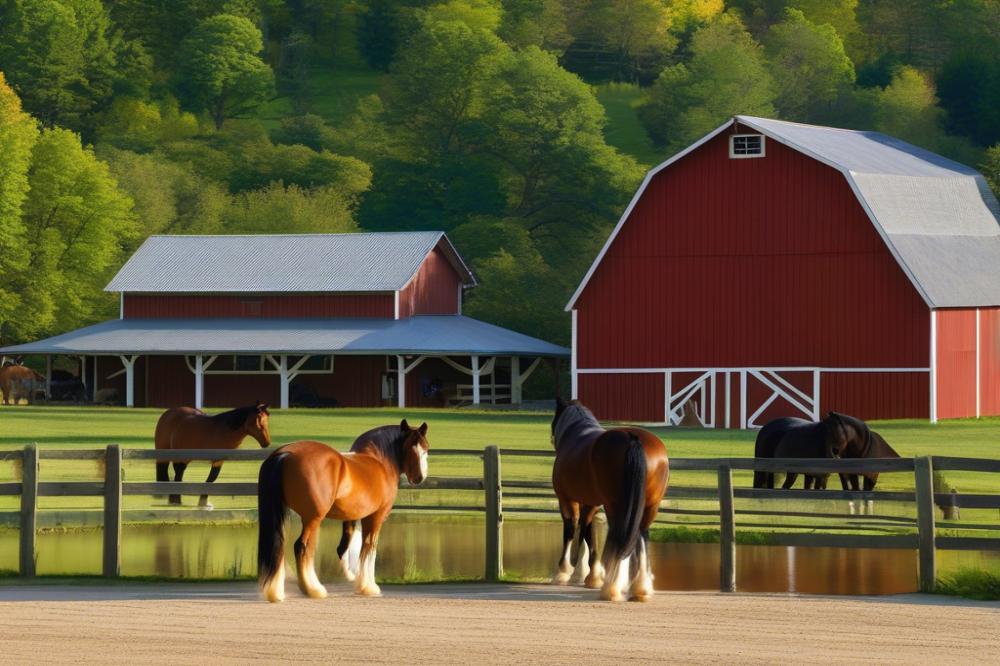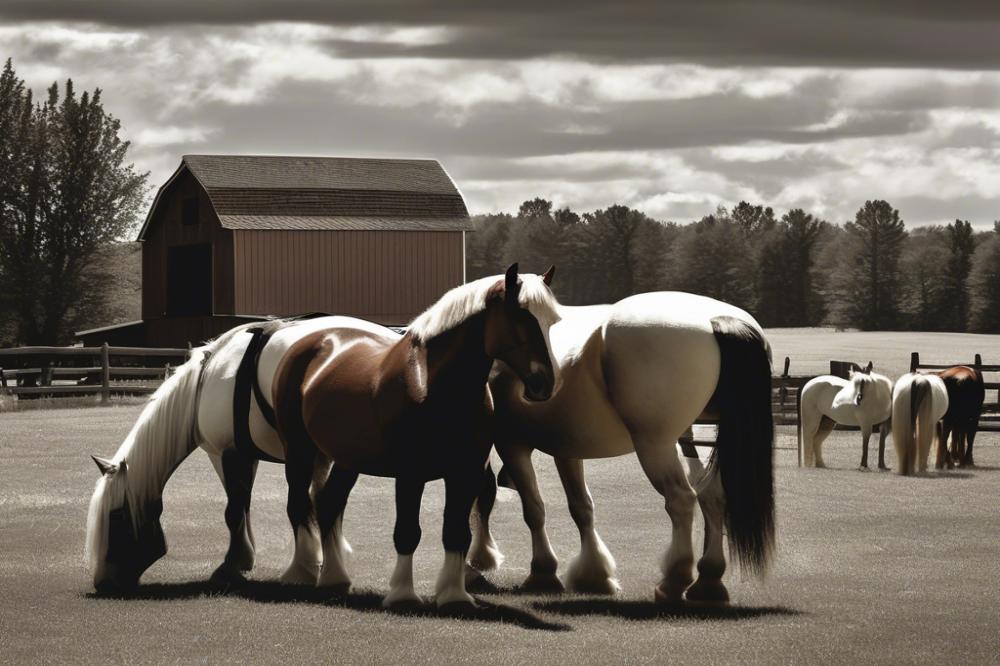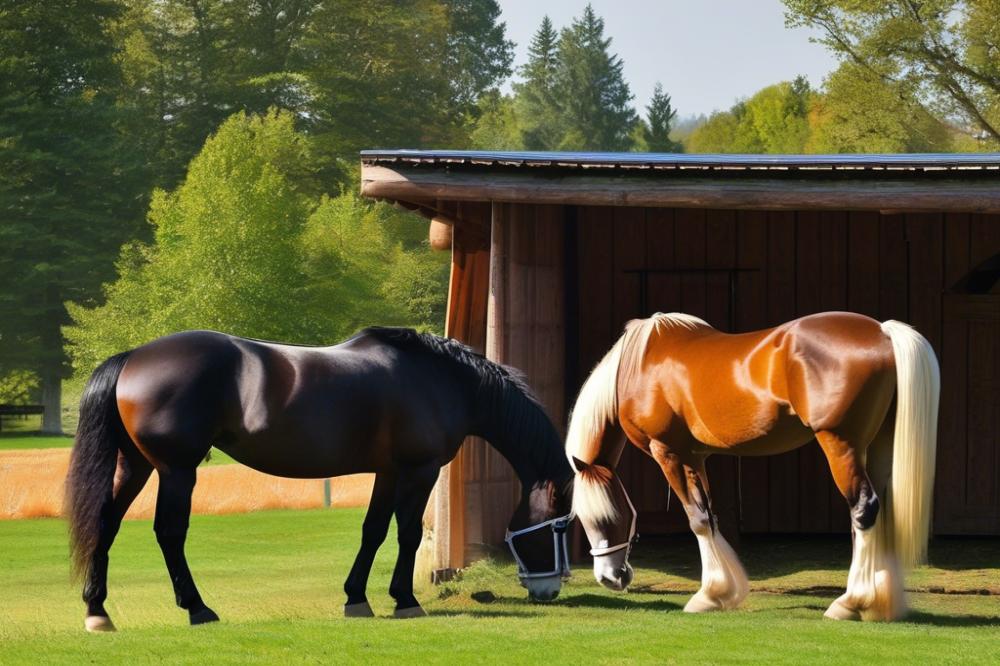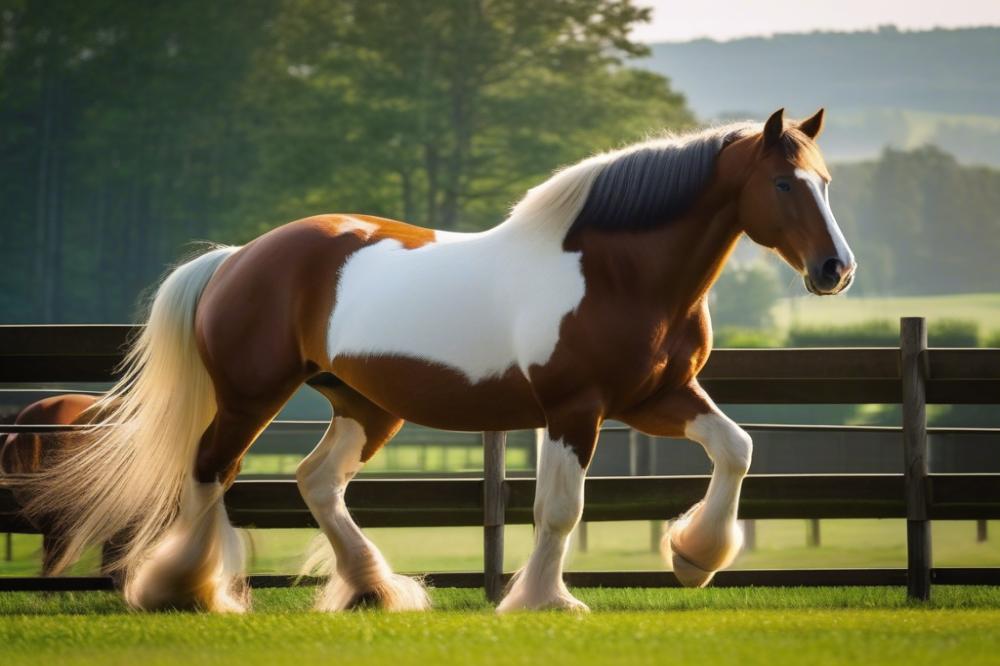Techniques for Breeding Draft Horses
Breeding draft horses is a process that combines art and science. It focuses on creating strong and capable animals for various purposes, including work and leisure. These horses are known for their large size and gentle temperament. They have been invaluable partners in agriculture, transportation, and other fields. Understanding the methods involved in this practice is crucial for success.
The importance of using effective techniques cannot be overstated. Breeders aim to produce healthy foals that inherit desirable traits from their parents. Selecting the right stallion and mare is vital. Their genetics play a significant role in the outcome. By carefully evaluating the lineage of the horses involved, breeders can predict the traits that foals will possess.
Setting clear goals is essential when engaging in breeding draft horses. Breeders may seek to enhance strength, endurance, or even specific physical characteristics. Some may prioritize temperament, ensuring good-natured horses that are easy to handle. A successful breeding program considers all of these factors and aims for a balanced approach. By doing so, they can contribute to the quality and diversity of draft horses, benefiting the entire equine community.
Understanding Draft Horse Breeds

Common breeds in draft horse breeding
Draft horses come in several well-known breeds. The Belgian is one of the largest and most powerful. It has a strong, muscular body, making it ideal for heavy work. Clydesdales are another popular choice, famous for their tall stature and distinct feathering on their legs. Percherons are esteemed for their graceful appearance and intelligence. These horses are often used in agriculture and can also excel in shows. Shires are similar to Clydesdales, known for their calm temperaments and strong work ethic. Each breed has its own unique traits that make them suitable for different tasks.
Characteristics of popular breeds
Belgian horses typically weigh between 1,800 and 2,200 pounds. They have a gentle disposition, which makes them great family companions. Clydesdales are often bay in color, marked by white markings on their faces and legs. Their size and elegance make them a favorite in parades. Percherons can be gray or black, with many displaying a sleek and muscular build. They are known for their speed and agility, unlike many other draft breeds. Shires tend to be the tallest of the group, boasting impressive height and strength. Their calm nature makes them suitable for beginners.
Selecting the right breed for specific needs
Determining the right breed depends on intended use. For heavy pulling or farm work, Belgians or Shires might be best. Those looking for a show horse with a striking appearance could favor a Clydesdale. Think about the climate as well. Some horses cope better with colder temperatures. Assess space and resources available for care. A large breed requires more food and space than smaller varieties. Finally, consider the horse’s temperament. Some breeds are more spirited, while others are more docile. Matching these factors to your needs will yield the best results.
breeding techniques for Draft Horses

Overview of Traditional breeding techniques
Many breeders have relied on traditional methods for centuries. Natural breeding involves a stallion and mare being brought together during the mare’s heat cycle. This usually takes place in open pastures for both animals’ comfort. The breeding season typically occurs in spring and summer, when temperatures are mild. Experienced breeders observe the horses closely during this time. They look for signs of heat in the mare, which include behavioral changes and increased urination. This method promotes natural behaviors, allowing horses to form stronger bonds.
Artificial Insemination in Equine Reproduction
Artificial insemination (AI) has become popular in recent years. This modern technique allows breeders to use sperm collected from a stallion without bringing the mare to him. AI offers many benefits. It expands genetic diversity by allowing mares to mate with stallions located far away. This also reduces risks associated with transporting horses. Proper handling of the sperm is crucial. It must be kept at the correct temperature and processed quickly. When done correctly, AI can increase the chances of successful mating.
Importance of Timing in Breeding
Timing plays a significant role in successful breeding. Knowing when a mare is in heat is essential. The period of heat usually lasts around five to seven days. This is when the mare is most receptive to mating. Monitoring the mare’s cycle carefully can lead to better results. Breeders often use specific health checks and tests to pinpoint the right moment. Many also keep detailed breeding records. Such records help in planning future breedings and optimizing outcomes.
Natural Versus Artificial Methods
Natural and artificial breeding methods each have their proponents. Some breeders prefer the old-fashioned ways. They enjoy watching horses interact and find joy in nature. Others lean towards AI due to its convenience and wider genetic options. Nonetheless, both methods require knowledge and dedication. It is important to weigh the advantages of each. Good communication with veterinarians and horse specialists can guide the decision. Every breeding program has its unique set of challenges. Understanding these differences helps breeders make informed choices.
Mare Selection

Criteria for Choosing a Mare
Selecting the right mare is crucial for successful breeding. Factors like physical traits, health, and pedigree play a role in this decision. Breeders should look for mares that exhibit strength, agility, and good conformation. These traits often reflect the mare’s ability to produce quality offspring. Additionally, a mare should have consistent results in her past foalings. If she has successfully raised healthy, strong foals before, that is a good sign.
Evaluating Physical Characteristics
Physical traits are very important. Breeders should examine the mare’s overall body structure. Look for strong legs, a well-proportioned build, and a good temperament. The mane and tail should be thick and healthy. Coat condition also matters; a shiny, clean coat often indicates good health. Comparing these traits with industry standards can help in making the right choice.
Importance of Temperament and Health
A horse’s health and temperament directly affect its breeding potential. Calm, friendly horses tend to be easier to manage during breeding and foaling. Behavioral issues can lead to complications. Therefore, it is necessary to evaluate a mare’s attitude and past health records. If a mare has consistent health issues, it could affect her offspring. A healthy mare promotes a smooth breeding process.
Genetics and Pedigree Analysis
Understanding genetics is critical in horse breeding. A mare’s pedigree reveals her lineage and inherited traits. Breeders must analyze the ancestry to identify desirable characteristics. Consider the track records of previous generations. This knowledge can help predict offspring potential. Choosing a mare with strong genetic backgrounds can improve the quality of the foals. It is wise to gather complete information about the mare’s ancestors before making a final choice.
Stallion Selection
Choosing the Right Stallion
Selecting an appropriate stallion is crucial in any breeding program. The stallion’s lineage should be carefully considered. Many breeders look for traits that have been passed down through generations. A well-chosen stallion can boost the quality of the foal significantly.
The Impact of Genetics on Offspring
Genetics play a vital role in determining the characteristics of the foal. Traits such as size, strength, and temperament can be inherited. Understanding the genetics of the stallion helps predict the potential of the offspring. Breeders often analyze pedigrees to find the best genetic matches.
Assessing the Stallion’s Performance Record
Performance records provide insight into a stallion’s capabilities. Results in competitions can indicate how well he performs under pressure. A strong track record often reflects a sound mind and good training. Evaluating these records is essential for making informed decisions in breeding.
Conformation and Breed Standards
Conformation refers to the physical structure of the stallion. Good confirmation is crucial for producing healthy foals. Specific breed standards exist to guide breeders in their selection. Many breeders assess the stallion’s stance, movement, and overall build. This evaluation helps maintain the integrity of the breed.
Crossbreeding
Crossbreeding involves mating different breeds to produce viable offspring. This practice can enhance desirable traits in horses. For breeders, it offers both opportunities and challenges. Careful planning is crucial to achieve the best results.
Benefits and challenges of crossbreeding
One significant benefit is the potential for hybrid vigor. This refers to offspring that are stronger and healthier than their parents. By introducing new genes, certain issues common in purebreds can be reduced. crossbreeding may also lead to improved performance in various activities.
However, challenges exist. Predicting how traits will mix can be difficult. Not every cross will yield the desired qualities. Additionally, it may take several generations to stabilize new traits. Breeders must be patient and dedicated to see results.
Popular crossbreeds in draft horse breeding
Several crossbreeds are favored among enthusiasts and professionals. The Belgian Warmblood is one example. Combining Belgian drafts with Thoroughbreds produces a horse with strength and agility. Another popular mix is the Clydesdale and Paint cross. This pairing often results in horses that are visually striking, with good temperaments.
Many breeders also pursue Percheron crosses. These horses often display versatility and adaptability. Characteristics from each breed can blend to create a dependable and attractive animal. The key is to choose breeds that complement each other well.
Understanding genetic diversity and traits
Genetic diversity is essential in breeding. It helps maintain healthy populations. A diverse gene pool can lead to more robust offspring. When two breeds are combined, unique traits may emerge, offering endless potential.
Understanding the traits of each breed permits strategic decisions. Breeders should look at characteristics like size, strength, and temperament. By recognizing the strengths of the parents, one can better predict the outcomes in offspring. This knowledge is vital for successful crossbreeding.
Creating hybrid vigor in offspring
Hybrid vigor occurs when two different breeds are crossed. The resulting foals may possess enhanced health and performance capabilities. This improvement can lead to athletes in competitions or resilient workhorses. Targeting the best traits from both breeds maximizes potential.
Breeding strategies should carefully consider the genetics of both parents. Monitoring the health and performance of each generation is important. Analyzing results can help refine future breeding choices. By continually focusing on genetic quality, breeders can cultivate a line of horses that thrive.
Breeding Programs
Developing a structured breeding program
Creating a structured breeding program involves careful planning. Identify desired traits for the horses. Consider factors such as strength, temperament, and health. Choose the right horses to breed. This step is crucial for achieving desired outcomes. Regular assessments of the horses should be conducted. Making adjustments to the program can lead to better results over time.
Long-term goals and vision for breeding
Establishing long-term goals is essential for any breeding initiative. Think about what the future of your breeding program should look like. Do you want to improve specific attributes or increase numbers? Formulate a vision that guides your decisions. Each breeding cycle offers insights that can shape future aspirations. Commitment to those goals will help maintain focus.
Monitoring and evaluating breeding outcomes
Monitoring breeding outcomes is vital for understanding progress. Keep track of each foal’s growth and development. Regular evaluations will help identify any issues early on. Collecting data on performance can assist in making informed decisions. Adjustments may be necessary to reach your goals successfully. Documenting successes and challenges helps improve the program.
Record-keeping and data management
Effective record-keeping is a cornerstone of a successful breeding program. Maintain accurate records of all breeding activities. This includes details on each horse’s lineage, health, and performance. Organizing data efficiently can save time and resources. Digital tools can streamline this process significantly. A well-managed database allows for easy retrieval of information when needed.
Foaling and Early Horse Care
Understanding the foaling process
Foaling is a crucial event in the life of a horse. It begins when the mare prepares to give birth. Signs of this include restlessness, frequent urination, and changes in appetite. A knowledgeable breeder should closely monitor the mare as her due date approaches. It is important to create a calm environment. The right setting can reduce stress for both the mare and the foal. Most foals are born during the night or early morning. This timing can often catch handlers off guard.
Mares usually deliver quickly. The actual birthing process can take anywhere from 15 minutes to an hour. After the foal is born, the umbilical cord will break on its own. It’s vital to allow the mare to bond with her newborn at this moment. The initial contact helps the foal start to recognize its mother. Watching the mare nibble at her foal is a heartwarming sight.
Immediate care for the mare and foal
Newborn foals require prompt assistance. Within the first hour, it’s crucial for them to stand and nurse. This first milk, called colostrum, is rich in antibodies and vital for their immune system. Check that the foal has latched on correctly. If the foal struggles to nurse, having a veterinarian on call can be lifesaving.
Mares need care as well. After foaling, monitor her for any signs of distress. Ensure she is comfortable and has access to clean water and quality hay. Regular observation will help catch any potential issues early. Both the mare and foal may be prone to stress. Breeders should approach them gently during this time.
Nutritional needs during early life
Nutrition plays a significant role in the health of both mare and foal. The mare’s diet must be rich in essential nutrients, as she is recovering while also feeding her foal. High-quality hay, grains, and supplements are vital. As the foal grows, its diet will evolve.
During the first few weeks, the foal will primarily depend on its mother’s milk for nourishment. Gradually, introducing solid foods will help the foal develop properly. It is an essential step in their growth. Providing a balanced diet will set the foundation for future health.
Importance of socialization and handling
Socialization begins shortly after birth. Handling foals gently can help them develop good behavior. Time spent with humans is crucial for their confidence.
Breeders should encourage interaction with other safe animals as well. This helps foals learn important social cues. Familiarization with various environments can reduce fear later in life. As they grow, regular handling will help with training. Horses that are accustomed to humans are easier to work with in the future.
With attention to care and socialization, mare and foal can thrive. Creating a positive atmosphere fosters strong bonds and helps assure a successful start.
Genetics and the Future of Draft Horse Breeding
Understanding heredity in breeding
Genetics plays a major role in how horses inherit traits. Breeders need to know which characteristics are passed down from parents to offspring. This understanding helps them make better choices. For example, traits like size, strength, and temperament can all be genetic. Knowledge of pedigree can also reveal valuable information. A horse’s lineage provides clues about potential performance and health. Recognizing these patterns is essential for successful breeding.
Using genetic testing for informed decisions
Genetic testing is becoming more common in horse breeding. This technique analyzes DNA to identify specific traits. By examining genetic markers, breeders can gain insight into health risks and desirable qualities. Such information allows them to avoid potential genetic diseases. They can also select horses that will likely produce strong foals. Genetic testing helps guide decisions in breeding, making processes more efficient. As a result, breeders can focus their efforts on the best matches.
Future trends in draft horse breeding
The future of breeding draft horses will likely see even more advancements. Technological improvements will continue to play a crucial role. One trend is the increasing use of artificial insemination. This method allows for a wider range of genetic choices. Access to superior genetics from around the world becomes possible. Additionally, breeders may explore cloning techniques to preserve exceptional horses. The focus will be on enhancing qualities that meet market demands. Eco-friendly practices might also become more popular as awareness grows about sustainable breeding.
Final Thoughts on Draft Horse Breeding
In summary, various techniques play crucial roles in the breeding of draft horses. Breeders must focus on genetic selection, health assessments, and nutritional management. These methods are essential for producing strong and healthy foals. Understanding and utilizing appropriate breeding techniques can contribute significantly to the outcomes of your breeding program.
Moreover, crossbreeding can offer advantages by introducing new traits. This practice can enhance the genetic diversity of the breed. When done correctly, it has the potential to improve overall vigor and performance in draft horses.
Breeders should take pride in their role and responsibilities. Using best practices in breeding not only benefits individual operations but also strengthens the breed as a whole. Responsible choices now will influence the future of these magnificent animals. Focusing on ethical considerations will ensure that draft horses continue to thrive for generations to come.
In conclusion, emphasizing sound breeding practices is vital. The success of future generations of draft horses relies on the dedication of today’s breeders. Committing to these principles will shape the legacy of this incredible breed.



